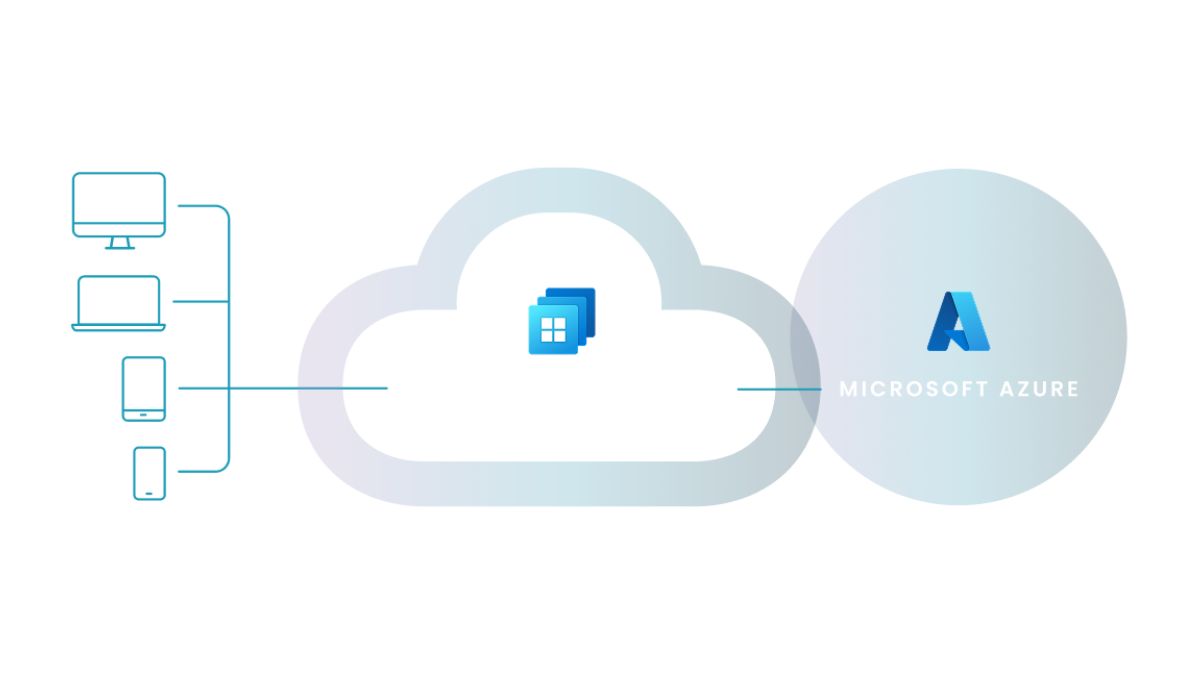TECHNOLOGY
Optimizing Microsoft 365 and Azure Together with Unified Managed Services

As modern businesses evolve, so do their IT ecosystems. Organizations are no longer operating on standalone tools—they are embracing integrated cloud platforms that work in harmony. Among the most powerful of these are Microsoft 365 and Microsoft Azure. When unified and managed efficiently, these platforms become the backbone of a scalable, secure, and cost-effective digital enterprise. This is where azure cloud management services play a crucial role—enabling businesses to unlock the full potential of Microsoft’s cloud offerings while ensuring seamless operations, enhanced security, and optimized performance.
Why Integrate Microsoft 365 and Azure?
Microsoft 365 and Azure are naturally complementary. While Microsoft 365 focuses on productivity, collaboration, and user experience with apps like Outlook, Teams, SharePoint, and OneDrive, Azure delivers infrastructure, data storage, computing power, security, and analytics. When businesses connect these environments under a unified strategy, they can streamline user identity management, enhance security compliance, enable smarter collaboration, and ensure centralized governance.
For example, Azure Active Directory (Azure AD) allows businesses to manage user identities across both platforms. Azure Information Protection (AIP) works in tandem with Microsoft 365 apps to classify and secure documents. And tools like Microsoft Defender unify threat protection across endpoints, apps, and infrastructure.
But to make this integration seamless, secure, and continually optimized, businesses need expertise—this is where managed Azure services providers step in.
What Are Unified Managed Services?
Unified managed services refer to end-to-end management of IT environments, including infrastructure, applications, data, and security, delivered through a centralized approach. For organizations using both Microsoft 365 and Azure, unified managed services consolidate operations across platforms, offering integrated monitoring, automation, cost optimization, user support, and compliance management.
This approach eliminates silos between teams managing productivity tools and those handling backend infrastructure. Instead of juggling multiple dashboards, IT teams get a unified view of system health, usage, and performance. Managed services providers bring deep knowledge of both platforms, helping organizations leverage native integrations, avoid redundant costs, and stay current with Microsoft’s rapidly evolving feature sets.
Benefits of Unified Managed Services for Microsoft 365 and Azure
- Centralized Identity and Access Management
Through Azure AD, unified services allow IT teams to manage user identities across cloud and hybrid environments. Single sign-on (SSO), multifactor authentication (MFA), and conditional access policies can be centrally managed for both Microsoft 365 and Azure resources—reducing risk and simplifying user access. - Streamlined Security and Compliance
Managed service providers integrate Microsoft Defender, Microsoft Purview, and Azure Security Center across environments to detect threats, monitor compliance, and enforce security policies. This is crucial for regulated industries like healthcare, finance, and legal sectors. - Improved Collaboration and Productivity
Unified services optimize Microsoft Teams, SharePoint, and OneDrive configurations while ensuring backend performance through Azure-based services like virtual desktops, AI, or automation tools. This synergy improves end-user experience and operational efficiency. - Proactive Monitoring and Support
Service providers offer 24/7 monitoring of both Microsoft 365 usage patterns and Azure infrastructure metrics. Issues are addressed before they impact users, and root-cause analysis ensures lasting solutions. - Cost Optimization
Azure and Microsoft 365 both operate on subscription models. Without proper oversight, organizations can overprovision resources or pay for unused licenses. Managed Azure services use analytics to right-size workloads, consolidate licenses, and forecast consumption, helping businesses stay within budget. - Automation and Orchestration
With tools like Azure Automation and Power Platform, managed service providers help businesses automate routine tasks like provisioning, updates, and reporting. This frees up internal IT teams for more strategic work. - Enhanced Business Continuity
Azure’s built-in disaster recovery solutions, like Azure Backup and Site Recovery, are configured and monitored by managed service providers to ensure minimal downtime. Microsoft 365 backups are also integrated to safeguard email, files, and communications.
Use Cases of Unified Managed Services in Action
- A mid-sized financial services firm uses Microsoft 365 for collaboration and Azure for secure hosting of customer data. A managed services provider ensures secure data transfers between platforms, monitors usage for regulatory compliance, and automates monthly reporting with Power BI and Azure Logic Apps.
- A global retail chain uses Azure Virtual Desktop (AVD) to deliver Microsoft 365 apps securely to remote employees. The managed service provider handles infrastructure scaling, license optimization, and provides 24/7 support.
- A healthcare organization leverages Azure for AI-driven diagnostics and Microsoft 365 for administrative communication. Their managed service provider ensures HIPAA compliance across both platforms and manages identity governance centrally through Azure AD.
Key Features to Look for in a Managed Azure Services Provider
When choosing a provider to manage your Microsoft 365 and Azure environments, look for the following capabilities:
- Expertise in both Microsoft 365 and Azure
- Microsoft Solution Partner credentials
- 24/7 monitoring and support
- Proven experience in regulatory compliance (e.g., HIPAA, GDPR, ISO)
- Ability to offer custom SLAs
- Integration with third-party security tools
- Experience with hybrid cloud environments
- Regular reporting and cost analysis
Top Service Providers Offering Unified Managed Azure Services
Here are some of the top providers known for delivering comprehensive managed Azure services that unify Microsoft 365 and Azure:
- InTWO
A Microsoft Solutions Partner with global presence, InTWO offers fully managed cloud services for both Microsoft 365 and Azure. They specialize in secure cloud transformation, identity management, cost optimization, and hybrid workplace solutions. - Rackspace Technology
Rackspace provides end-to-end Azure and Microsoft 365 management, including migration, monitoring, DevOps, and compliance services. Their Fanatical Support® model offers hands-on assistance around the clock. - Infosys
Infosys delivers managed Azure and Microsoft 365 services with a strong emphasis on AI and automation. Their Cobalt platform enables rapid innovation and scalable management across enterprises. - Tata Consultancy Services (TCS)
TCS offers unified cloud operations across Microsoft Azure and Microsoft 365. Their Azure Foundation Framework ensures secure, compliant deployments while their M365 practice optimizes collaboration experiences. - Wipro
Wipro’s managed cloud services include unified management across Microsoft 365 and Azure. Their Cloud Studio framework enhances automation, governance, and security monitoring for hybrid enterprises. - HCLTech
HCL provides managed cloud services for large enterprises, including Microsoft 365 license management, Azure platform optimization, and unified security operations centers (SOCs). - DXC Technology
DXC offers hybrid cloud management services that include integrated Microsoft 365 and Azure operations, lifecycle management, and AI-based analytics. - Cognizant
Cognizant helps organizations modernize and manage their Microsoft ecosystem with end-to-end services, including Microsoft 365 migration, Azure cost control, and compliance services.
Future Outlook: Intelligent Cloud Management
With the rise of AI, edge computing, and data privacy regulations, the future of unified managed services will be more intelligent, predictive, and autonomous. Microsoft’s ongoing integration of Copilot and AI models into both Azure and Microsoft 365 is reshaping how businesses operate. Managed service providers will play a critical role in configuring, maintaining, and customizing these AI-driven tools for maximum benefit.
Additionally, the need for real-time decision-making, hyper-personalized user experiences, and sustainable IT strategies will push businesses to unify their cloud platforms more tightly than ever before. Investing in managed Azure services now is not just about reducing IT complexity—it’s about building the digital resilience necessary for long-term growth.
Conclusion
In today’s hybrid work era, combining Microsoft 365 and Azure is no longer optional—it’s essential. However, to harness the full power of this integration, businesses need unified management strategies that eliminate inefficiencies, reduce risks, and support continuous innovation. With the help of experienced providers like InTWO, organizations can achieve a cloud ecosystem that is secure, scalable, and future-ready. By leveraging managed Azure services, companies not only simplify their operations but also elevate their digital capabilities to new heights.
TECHNOLOGY
Maximizing Your Experience with Pasonet: Tips and Tricks for Users

Introduction to Pasonet
Welcome to the world of Pasonet! If you’re looking to enhance your online experience, you’ve landed in the right place. Pasonet offers a wealth of features designed to streamline your tasks and boost productivity. But like any powerful tool, it’s essential to know how to use it effectively.
Whether you’re new or just want to sharpen your skills, this guide is here for you. We’ll explore everything from setting up your account seamlessly to diving into advanced techniques that will elevate your usage. Get ready to unlock the full potential of Pasonet and transform how you interact with digital platforms!
Overview of Features and Benefits
Pasonet offers a range of features designed to enhance user experience. One standout aspect is its intuitive interface, which makes navigation seamless for both newcomers and seasoned users.
The platform supports various applications, allowing flexibility in how you engage with your content. Users can customize their settings for an even more personalized touch, making the process efficient.
Security is another critical feature. Pasonet employs robust measures to protect user data, ensuring peace of mind while interacting online.
Additionally, collaboration tools are integrated into the system. This fosters communication among team members and promotes productivity across projects.
Pasonet provides excellent customer support resources. Whether through tutorials or live assistance, help is readily available whenever it’s needed.
Tips for Setting Up Your Pasonet Account
Setting up your Pasonet account is the first step toward optimizing your experience. Start by visiting the official website and clicking on the “Sign Up” button.
You’ll need to provide basic information, such as your name and email address. Choose a strong password that combines letters, numbers, and special characters for added security.
Once registered, verify your email through a confirmation link sent to you. This ensures that you have full access to all features.
Consider personalizing your profile after logging in. Uploading a profile picture can make interactions feel more engaging.
Take some time to explore settings tailored to enhance usability. Adjust notification preferences according to how often you wish to receive updates or alerts from Pasonet’s platform.
Navigating the Pasonet Platform – A Step-by-Step Guide
Getting started with Pasonet is straightforward. First, log into your account using your credentials. The homepage presents a clean layout, showcasing various features.
Explore the dashboard to familiarize yourself with different sections. Each tab leads you to tools designed for communication and collaboration.
To send messages or create groups, locate the messaging icon on the left sidebar. Click it to initiate conversations seamlessly.
For project management, head over to the projects section where you can view deadlines and assign tasks effortlessly.
Don’t forget about settings! Customize notifications and privacy options by accessing your profile settings in the top right corner.
If you’re looking for resources or support, check out the help center link at the bottom of every page; it’s filled with guides and FAQs that can enhance your experience further.
Advanced Techniques for Using Pasonet Effectively
To maximize your Pasonet usage, explore the platform’s automation features. Automating routine tasks can save you time and enhance efficiency.
Consider using advanced filters when searching for specific content. This helps narrow down results to exactly what you need without wading through irrelevant information.
Utilize keyboard shortcuts for quicker navigation across the site. Familiarizing yourself with these commands boosts productivity significantly.
Engage in community forums within Pasonet. Connecting with other users allows you to share insights, ask questions, and discover tips that others have found beneficial.
Regularly check for updates and new features released by Pasonet. Staying informed ensures you’re leveraging all tools available to enhance your experience on the platform.
Troubleshooting Common Issues with Pasonet
Using Pasonet can be seamless, but sometimes users encounter issues. Let’s tackle some common problems you might face.
If your account isn’t loading, check your internet connection first. A weak signal can hinder access to the platform. Restarting your router may help restore connectivity.
For login troubles, ensure that you’re entering the correct credentials. If you’ve forgotten your password, don’t worry; use the “Forgot Password” option for a quick reset.
Another frequent hiccup involves slow performance on mobile devices. Try clearing the app cache or updating to the latest version of Pasonet for improved functionality.
If specific features aren’t working as expected, consider reviewing any recent updates from Pasonet’s support page. They often provide solutions and workarounds for known bugs or glitches.
Conclusion: Making the Most of Your Pasonet Experience
To truly maximize your experience with Pasonet, it’s essential to explore its many features and functionalities. By setting up your account correctly and navigating the platform with confidence, you’ll unlock a world of possibilities.
Make use of advanced techniques that can streamline your tasks and enhance efficiency. Regularly refer to troubleshooting tips for any hiccups you might encounter along the way. Engaging with community forums or support channels will also provide valuable insights from other users.
Embrace the full spectrum of what Pasonet offers. Whether you’re using it for personal projects or professional endeavors, staying proactive in learning new ways to utilize this powerful tool will ensure you reap all its benefits. Your journey with Pasonet is just beginning—dive deeper into its capabilities, stay curious, and enjoy everything it has in store for you!
TECHNOLOGY
Why Antennino is the Next Big Thing in Blogging

Introduction to Antennino
Are you ready to discover the next big thing in blogging? Meet Antennino, a fresh and innovative platform that’s making waves in the content creation world. With its user-friendly interface and a focus on community engagement, Antennino is transforming how bloggers connect with their audience. Whether you’re an aspiring writer or an experienced blogger looking for your next adventure, this platform has something special to offer. Dive into the world of Antennino and see why it might just be your new favorite space for sharing ideas and stories!
What sets Antennino apart from other blogging platforms?
Antennino is redefining blogging with its intuitive interface and user-centric design. Unlike traditional platforms, it prioritizes ease of use, making it accessible for all skill levels.
One standout feature is its advanced analytics dashboard. Bloggers can track engagement metrics in real-time. This allows for quick adjustments to content strategies based on audience behavior.
Customization options are also impressive. Antennino provides flexible templates that cater to various niches without sacrificing aesthetics or functionality.
Additionally, the built-in community features foster collaboration among bloggers. Users can connect easily, share insights, and participate in discussions that enhance their craft.
Monetization tools set Antennino apart as well. The platform supports multiple revenue streams including affiliate marketing and sponsored posts directly integrated into blog layouts.
This combination of usability, community engagement, and monetization makes Antennino a compelling choice for both new and experienced bloggers looking to elevate their online presence.
The benefits of using Antennino for bloggers
Antennino offers a fresh approach for bloggers seeking to elevate their game. Its user-friendly interface makes it easy to navigate, even for those who aren’t tech-savvy. This platform focuses on delivering seamless experiences, allowing creators to concentrate on what they do best—writing.
One standout benefit is its powerful analytics tools. Bloggers can track audience engagement and performance metrics in real-time. Understanding these insights helps refine content strategies effectively.
Another advantage is the vibrant community surrounding Antennino. Networking opportunities abound, fostering collaboration among like-minded individuals passionate about blogging.
Additionally, Antennino integrates advanced SEO features right into the platform. These tools help blogs rank higher in search results without needing extensive knowledge of optimization techniques.
With consistent updates and innovative features rolled out frequently, staying relevant becomes second nature on this dynamic platform.
How Antennino is changing the game for content creators
Antennino is revolutionizing the way content creators engage with their audiences. Its user-friendly interface allows for seamless navigation and encourages creativity without technical barriers.
The platform’s innovative features, like customizable templates and integrated SEO tools, empower bloggers to optimize their content effortlessly. This means that even those new to blogging can produce professional-looking posts in no time.
Community engagement has also taken a leap forward on Antennino. Creators can interact directly with readers through comments and polls, fostering a sense of belonging and immediate feedback.
Moreover, the built-in analytics provide valuable insights into audience behavior. This data informs content strategies, allowing creators to tailor their approach based on real-time performance metrics.
With its focus on collaboration and sharing knowledge among users, Antennino nurtures an environment where creativity flourishes. It’s not just a tool; it’s a supportive community driving innovation in blogging.
Success stories from bloggers using Antennino
Success stories abound among bloggers who have embraced Antennino. For instance, Sarah, a food blogger, transformed her passion into profit. With Antennino’s user-friendly interface and SEO tools, she increased her site traffic by over 200% within just six months.
Then there’s Mark, a travel enthusiast who found his niche on the platform. By leveraging Antennino’s built-in social sharing features, he connected with like-minded adventurers. His blog now garners thousands of readers each month.
Also noteworthy is Jenna, a lifestyle influencer who capitalized on Antennino’s monetization options. She successfully launched an e-book through her blog and saw impressive sales right away.
These real-life examples highlight how diverse creators are finding success using this innovative blogging platform. The adaptability of Antennino enables bloggers to thrive in their respective niches while building vibrant communities around their content.
Tips for maximizing your blog on Antennino
Start by optimizing your blog’s layout. Antennino offers various themes to enhance visual appeal. Choose one that reflects your brand while remaining user-friendly.
Next, leverage the platform’s SEO tools. Use keywords strategically throughout your posts without stuffing them. This will help improve visibility on search engines.
Engage with your audience through comments and social media integration. Responding promptly creates a sense of community around your blog.
Don’t overlook analytics features provided by Antennino. Track which posts perform well and adjust your strategy based on insights gained.
Collaborate with other bloggers within the Antennino ecosystem. Guest posts can broaden reach and introduce you to new audiences eager for fresh content.
Conclusion and future predictions for Antennino in the blogging world
As the digital landscape continues to evolve, Antennino stands at the forefront of this transformation. With its unique features and user-friendly interface, it is set to redefine how bloggers interact with their audience. The platform’s commitment to providing tools that enhance creativity while simplifying the blogging process can only mean good things for content creators.
Looking ahead, we can expect Antennino to introduce even more innovative functionalities tailored specifically for bloggers. As competition grows within the industry, its focus on community engagement and support will further solidify its position as a go-to choice among content creators.
Antennino has already garnered attention from various sectors in the blogging world; it’s just getting started. As more users share their success stories, others are likely to take notice and join in on this exciting journey. In an era where meaningful connections matter more than ever, platforms like Antennino are poised not just to thrive but also shape future trends in blogging itself.
With such promise on the horizon, those who choose Antennino may find themselves riding a wave of growth and opportunity unlike any other in today’s fast-paced online environment. Embracing this platform could very well be a game-changer for aspiring bloggers ready to make their mark.
TECHNOLOGY
How Coome.su is Revolutionizing Online Collaboration

Introduction to Coome.su
In an age where collaboration transcends geographical boundaries, the tools we use can make or break our efforts. Enter Coome.su—a game-changer in online collaboration. This innovative platform is not just about sharing files and messages; it’s designed to foster creativity, streamline communication, and enhance productivity like never before. Whether you’re a freelancer working with clients across the globe or part of a large corporation with teams scattered everywhere, Coome.su offers solutions that cater to all your collaborative needs. Let’s dive into what makes Coome.su stand out in a crowded market!
What sets Coome.su apart from other collaboration tools?
Coome.su stands out in a crowded market of collaboration tools through its user-centric design. Unlike many platforms that can feel overwhelming, Coome.su prioritizes simplicity and ease of use.
The intuitive interface allows team members to jump right into their tasks without a steep learning curve. This focus on user experience helps teams stay productive from day one.
Another differentiator is the seamless integration with existing workflows. Coome.su connects effortlessly with popular applications, enabling users to incorporate it into their daily routines without disruption.
Real-time collaboration features elevate communication beyond traditional chat functions. Teams can share files, brainstorm ideas, and provide instant feedback within one unified platform.
Moreover, Coome.su’s robust security measures ensure that sensitive data remains protected while fostering an open environment for creativity and innovation among teams.
Features and Benefits of Coome.su
Coome.su stands out with its user-friendly interface, making collaboration intuitive for everyone. Users can easily navigate through a clean design that fosters productivity.
One of the key features is real-time document editing. Team members can work simultaneously on projects, ensuring seamless communication and instant feedback. This feature significantly reduces delays in project timelines.
The platform also offers integrated video conferencing tools. With high-quality audio and visual capabilities, remote teams stay connected as if they were in the same room.
Moreover, Coome.su includes task management functionalities that provide clear visibility into responsibilities and deadlines. Teams can assign tasks effortlessly and track progress without confusion.
Security is another cornerstone of Coome.su’s offering. Robust encryption ensures sensitive information remains protected while users collaborate freely across different locations.
These features create an environment where creativity thrives and teamwork flourishes effortlessly.
Success Stories: Real-life examples of how Coome.su has improved online collaboration
Businesses across various sectors are witnessing transformative results with Coome.su. One marketing agency streamlined its project management by adopting this tool, enabling seamless communication among team members. The result? A 30% increase in campaign efficiency.
A tech startup utilized Coome.su for remote brainstorming sessions. With its interactive features, the team generated innovative ideas faster than ever before. They reported a significant boost in creativity and collaboration.
In education, a university professor integrated Coome.su into his online classes to enhance student engagement. Students found it easier to collaborate on projects, leading to improved grades and satisfaction rates.
These real-life examples highlight how diverse organizations leverage Coome.su’s capabilities to overcome challenges and achieve their goals efficiently. The platform is proving essential for those aiming for successful outcomes in collaborative efforts.
How to get started with Coome.su
Getting started with Coome.su is a breeze. First, visit the website and sign up for an account. The intuitive interface guides you through the process.
Once registered, explore the dashboard. Familiarize yourself with key features like project management tools and real-time chat options.
Next, create or join a workspace. Inviting team members is simple; just send them an invitation link directly from your dashboard.
Don’t forget to customize your settings to match your workflow preferences. This will enhance productivity right from the start.
Take advantage of tutorials available on Coome.su’s support page for deeper insights into various functionalities. Engaging in community forums can also provide tips and best practices shared by other users.
Start collaborating seamlessly today!
The future of online collaboration with Coome.su
The future of online collaboration is bright with Coome.su at the forefront. As remote work continues to rise, this platform adapts seamlessly to meet evolving needs.
Imagine a workspace where ideas flow effortlessly between team members, regardless of location. Coome.su’s innovative features ensure real-time communication and project tracking that keeps everyone aligned.
Artificial intelligence integration may soon enhance user experiences further. This could lead to smart suggestions for task management or automated reminders tailored specifically for your workflow.
Moreover, Coome.su fosters inclusivity by providing tools designed for diverse teams. Language translations and accessibility options will empower every member to contribute effectively.
As technology advances, so does the potential for deeper connections among collaborators. With its dedication to continuous improvement, Coome.su is set not just to keep up but drive change in how we collaborate online across various industries.
Conclusion: Why Coome.su is the top choice for businesses and individuals seeking efficient and effective collaboration solutions
Coome.su stands out as a game-changer in the realm of online collaboration. It offers an array of features designed to enhance productivity and streamline communication. From its intuitive interface to powerful integration capabilities, Coome.su caters to both businesses and individual users.
The platform’s ability to unify various collaborative tools into one seamless experience is a significant advantage. Users can manage projects, share files, and communicate effortlessly without switching between multiple applications. This not only saves time but also reduces confusion among team members.
Real-life success stories highlight how Coome.su has transformed workflows for companies across different sectors. Teams that once struggled with coordination are now achieving their goals more efficiently using this innovative tool.
Getting started with Coome.su is simple and user-friendly, making it accessible for everyone—from tech-savvy professionals to those new to digital collaboration spaces.
As we look ahead, it’s clear that Coome.su will continue shaping the future of online collaboration by adapting to emerging trends and user needs. Businesses aiming for enhanced efficiency should consider adopting this groundbreaking solution.
Choosing Coome.su means opting for reliability, innovation, and a commitment to effective teamwork—qualities every organization seeks in today’s fast-paced environment. For anyone looking to improve their collaborative efforts, it undoubtedly emerges as the go-to choice.
-

 TOPIC5 months ago
TOPIC5 months agoSymbols of Hope: The 15th Belenismo sa Tarlac
-

 TOPIC5 months ago
TOPIC5 months ago“The Journey Beyond Fashion” – Ditta Sandico
-

 NEWS5 months ago
NEWS5 months agoHistorical Churches in Manila
-

 TOPIC4 months ago
TOPIC4 months agoRIZAL at 160: a Filipino Feat in Britain
-

 TOPIC5 months ago
TOPIC5 months ago“Recuerdos de Filipinas – Felix Laureano”
-

 TOPIC5 months ago
TOPIC5 months agoBoats with Two Strings
-

 TOPIC5 months ago
TOPIC5 months ago5 Must-Have Products From Adarna House to Nurture Your Roots
-

 TOPIC5 months ago
TOPIC5 months agoA Taste of Art, A Brush of Flavor: The Culinary and Creative Genius of Claude Tayag
